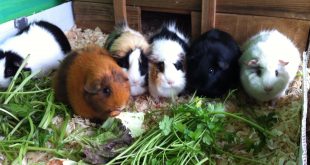To guarantee that your cavy lives a long, happy as well as flourishing life it is essential that your cavy keeps a healthy and balanced diet plan. A typical test subject diet plan contains fresh water, hay, pellets, vitamin C and also some fresh veggies.
Vitamin C:
There are a few ways that your cavy gets Vitamin C. Guinea Pigs obtain Vitamin C from consuming fresh vegetables and pellets; nonetheless this might not be enough. Guinea Pigs require around 10-30 mg of Vitamin C every day to prevent getting scurvy. If you feel that your test subject is not obtaining enough Vitamin C with their routine diet plan than we suggest offering them a small dosage of liquid vitamin C, or break up a tiny chewable vitamin C tablet as well as feed it to them directly.
It is essential not to mix Vitamin C (or any type of supplements, or drugs) in with the test subject water. Vitamin C will change the taste of the water and test subject will not drink it. If they do consume it, they may not be consuming alcohol sufficient of it.
Fresh Water:
Adjustment the water daily, restore with fresh cold water; water from the faucet works just great. You intend to prevent distilled water, water with too much calcium in it and water with a high mineral material. The most effective method to supply the water is by utilizing an upright hanging canteen to prevent spills and contamination.
Pellets:
Guinea Pig Food ought to be stored in a tiny ceramic, tough plastic bowl or in a tiny food storage space bin especially created for little animals. It is advised that test subject food obtains altered daily and the bowl is cleansed daily as well. Because of this it excellents to have 2-3 bowls for everyday replenishment.
Look for a guinea pig pellet food that has vitamin C in it, as well as stay clear of foods with a high quantity of corn. Commonly a cavy must eat 1/8 of a cup of pellets a day (check the bundle for recommended serving sizes) along with hay as well as some vegetables.
A lot of test subject pellets are primarily alfalfa which is excellent for young guinea pigs, and also expectant test subject. When your cavy has gotten to a year old changing to Timothy pellets is a great idea as it is lower in calcium which will avoid any type of issues with urinary-tract infections.
Hay:
An adequate quantity of hay should always be provided whatsoever times and is good for test subject of any ages. Hay is not a replacement for pellets, and pellets are not a substitute for hay. Hay is necessary to the diet plan of a guinea pig due to the fact that it helps them naturally absorb their food a lot better, enhance their fiber intake and also decrease urinary-tract infections. A straightforward wire rack can be used to house the hay in the test subject cage.
There are 2 main kinds of Hay; alfalfa hay which is terrific for young test subject as well as malnourished, expectant and/or nursing cavy’s and also timothy hay which is ideal for grown-up guinea pigs. Alfalfa has a high amount of calcium so it must just be provided to grown-up test subject occasionally as a reward.
Veggies:
Among the most significant foundations in your guinea pigs diet is fresh vegetables. Cavies ought to slowly be presented to fresh vegetables (to prevent gastrointestinal issues), once cavies recognize with vegetables you can begin to blend a variety of them right into your cavy’s diet.
Vegetables that guinea pigs can eat:
Romaine lettuce, environment-friendly and red pepper, spinach, carrots, tomatoes, cantaloupe, dandelion eco-friendlies, corn husks, clover, as well as much more.
 Animals R Great Authority Site for Small Animals
Animals R Great Authority Site for Small Animals

